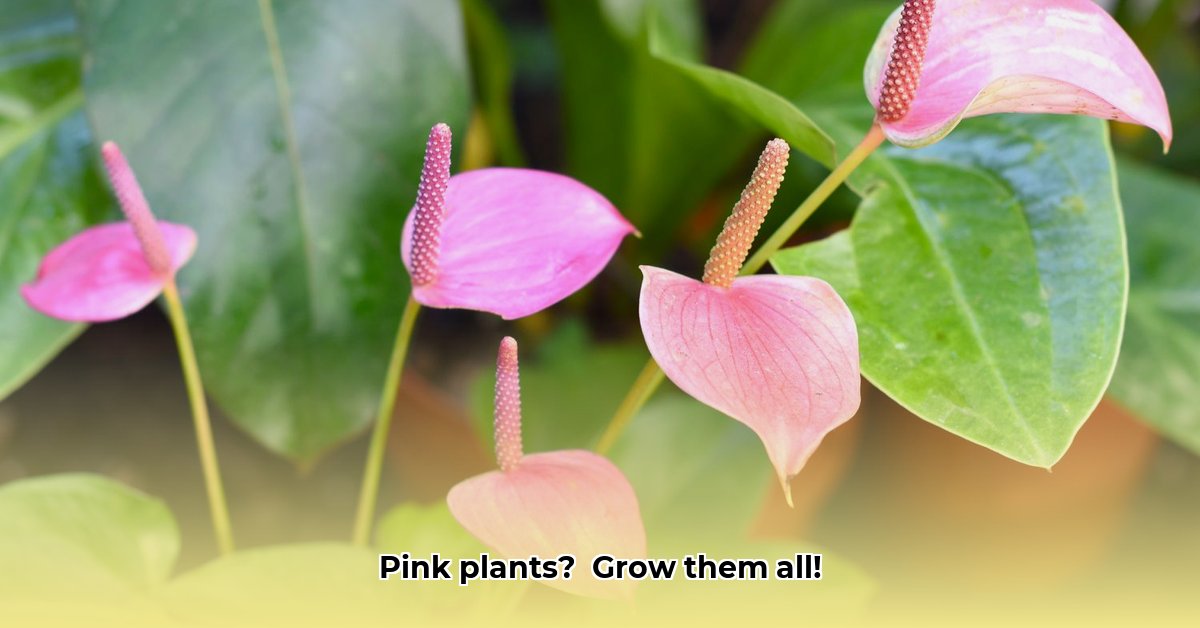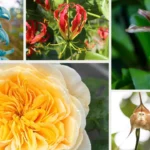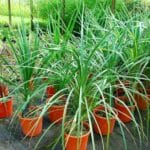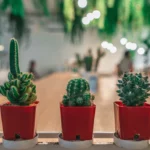Pink houseplants infuse any indoor space with a touch of magic and vibrancy. This guide provides the knowledge and practical steps to cultivate these beauties, regardless of your plant-parenting experience. From lighting and watering to troubleshooting and propagation, we’ll cover everything you need for a thriving pink paradise. For more pink floral inspiration, check out these pink flowers.
Decoding Pink Plant Needs: Light, Water, and Humidity
Pink houseplants require a balanced environment to maintain their vibrant hues. Here’s a breakdown of the essentials:
Light: Bright, indirect light is crucial. A lightly shaded window provides ideal conditions – enough light for vibrant color without scorching the leaves. Insufficient light leads to fading, while excessive light causes sunburn. Consider a sheer curtain to filter direct sunlight. Observe your plant’s response to its location and adjust accordingly.
Watering: Overwatering is a common mistake. Allow the top two inches of soil to dry completely between waterings to prevent root rot. Test soil moisture by inserting your finger. If it feels dry, it’s watering time. Water thoroughly until water drains from the drainage holes, ensuring excess water doesn’t accumulate in the saucer. The frequency will vary depending on the plant, pot size, and environmental conditions.
Humidity: Many pink plants thrive in humid environments. Elevate humidity by grouping plants, placing them on a pebble tray filled with water (without submerging the pot’s base), or using a humidifier. Regular misting can also help, but avoid misting plants susceptible to fungal diseases.
Selecting the Perfect Pink Plant
Pink plants vary in their care requirements. Choose a plant that suits your lifestyle and experience:
Beginners: Start with low-maintenance varieties like Aglaonemas, known for their resilience and tolerance of varied conditions. Other beginner-friendly options include Tradescantia Nanouk and certain succulents like Echeveria ‘Perle von Nurnberg.’
Experienced Plant Parents: Challenge yourself with Calatheas or Stromanthe, renowned for their intricate patterns and vibrant pinks but requiring more attentive care. Pink Princess Philodendrons also offer a rewarding experience for those comfortable with addressing variegation needs.
Thorough research on specific plant needs is paramount for success.
Troubleshooting Common Issues
Even with diligent care, problems can occur. Here’s how to diagnose and address them:
Fading Pink: Insufficient light is the most common cause. Relocate your plant to a brighter spot or supplement with a grow light. Consider the intensity and duration of light exposure.
Drooping Leaves: This can indicate either overwatering or underwatering. Check the soil moisture. If dry, water thoroughly. If soggy, reduce watering frequency and ensure proper drainage. Root rot, a result of overwatering, requires immediate attention, including repotting with fresh soil.
Brown, Crispy Edges: This often signifies low humidity or inconsistent watering. Increase humidity using the methods mentioned above. Ensure consistent watering, avoiding extremes of dryness and saturation. Check for pests, which can also cause leaf damage.
Yellowing Leaves: Several factors can contribute to yellowing leaves, including overwatering, underwatering, nutrient deficiencies, or pests. Assess the overall plant health, including the soil moisture, light exposure, and presence of pests. Adjust care accordingly.
Regularly inspecting your plants allows for early detection and prompt intervention, maximizing the chances of a successful recovery.
Propagating Pink Houseplants
Expand your collection and share the joy by propagating your pink beauties. Stem cuttings are a popular and effective method:
Select a Healthy Stem: Choose a stem with several nodes (growth points for leaves and roots).
Prepare the Cutting: Using a clean, sharp knife or pruning shears, take a cutting about 4-6 inches long. Remove the lower leaves, leaving a few at the top to prevent excessive moisture loss.
Root in Water or Soil: You can root the cutting in water or directly in a moist potting mix. For water propagation, place the cutting in a glass of water, ensuring the nodes are submerged. Change the water every few days to prevent stagnation. For soil propagation, use a well-draining potting mix and maintain consistent moisture.
Provide Ideal Conditions: Place the cuttings in a warm location with bright, indirect light. Covering the cuttings with a clear plastic bag or humidity dome can create a more humid environment and accelerate root development.
Monitor and Transplant: Root development typically takes several weeks. Once the roots are about an inch long, you can transplant the cuttings into individual pots with fresh potting mix.
Spotlight on Popular Pink Varieties
Here’s a closer look at some favored pink houseplants:
Aglaonema: Tolerant of various light conditions, but thrives in bright, indirect light. Allow the soil to dry between waterings and provide moderate to high humidity.
Calathea: Prefers low to medium indirect light and consistently moist (but not soggy) soil. High humidity is essential for optimal health.
Fittonia (Nerve Plant): Thrives in bright, indirect light and prefers consistently moist soil. High humidity is crucial to prevent leaf crisping.
Pink Congo Philodendron: While the vibrant pink is often induced, maintaining the color requires bright, indirect light. Allow the soil to dry between waterings and provide moderate to high humidity. Be prepared for potential reversion to green foliage.
Tradescantia Nanouk: Tolerates a range of light conditions, but brighter light enhances the pink variegation. Allow the soil to dry slightly between waterings. Easy to propagate and enjoys regular pruning to maintain a bushy shape.
Echeveria ‘Perle von Nurnberg’: A succulent that thrives in bright, direct light. Allow the soil to dry completely between waterings and avoid overwatering.
This guide provides a solid foundation for cultivating thriving pink houseplants. Enjoy the vibrant beauty and unique character these plants bring to your home!
- Personal Computer World’s Rise and Fall: A Tech Media Story - April 30, 2025
- Convert 21 Degrees Fahrenheit to Celsius: Easy Guide - April 30, 2025
- Unlock How a Record Player Works: A Complete Guide - April 30, 2025
















